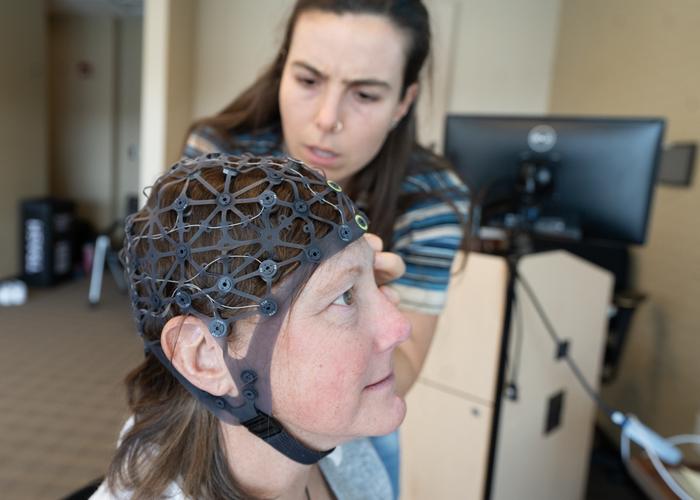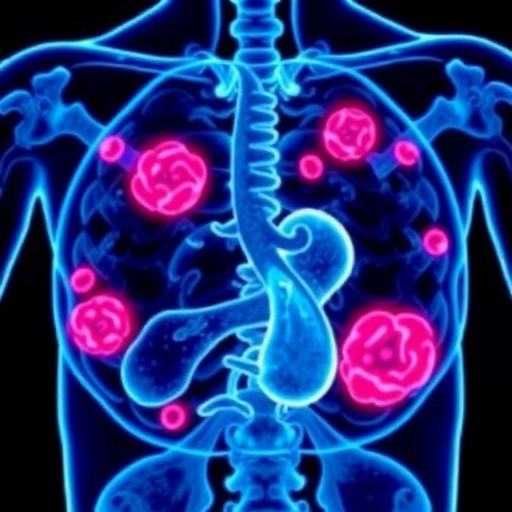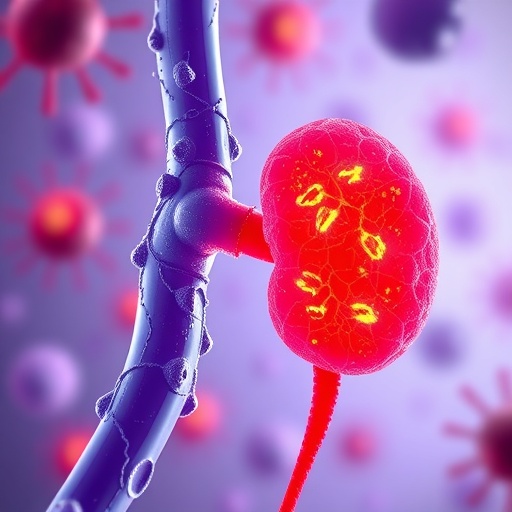
Adapted Argentine Tango Dance Therapy Shows Promise in Rewiring the Brain to Alleviate Chemotherapy-Induced Neuropathy in Breast Cancer Survivors
Neuropathy, a debilitating condition often experienced by breast cancer survivors following chemotherapy, poses significant challenges to daily living due to numbness, burning sensations, and loss of tactile feeling in extremities. This side effect commonly arises from taxane-based chemotherapeutic regimens known to damage peripheral nerves, drastically affecting the quality of life and increasing fall risk among survivors. Conventional rehabilitation techniques have provided limited relief, prompting researchers to explore innovative, integrative therapeutic interventions. A groundbreaking study led by Dr. Lise Worthen-Chaudhari at The Ohio State University Comprehensive Cancer Center (OSUCCC – James) and the College of Medicine Department of Physical Medicine and Rehabilitation is elucidating how adapted Argentine tango dance therapy can stimulate neuroplasticity to restore sensory and motor function in this population.
The central premise of this research involves leveraging the neurophysiological phenomenon known as entrainment—the synchronization of neural firing patterns with external rhythmic stimuli—to facilitate the “rewiring” of damaged nerve pathways through musical movement. Argentine tango, characterized by its distinctive rhythm at approximately 120 beats per minute, induces a coordinated interplay between auditory cues and motor responses, fostering enhanced dual-task functionality. This dual-tasking involves simultaneous cognitive processing and motor execution, critical for complex activities such as walking while engaging in conversation, and is often impaired in neuropathy patients. Dr. Worthen-Chaudhari’s pilot findings suggest that modest doses of social dance, distinctly more cognitively engaging than traditional home exercise, can uniquely stimulate brain regions associated with sensory integration and motor control.
A notable aspect of this intervention is its emphasis on long-term adherence through intrinsic motivation derived from the social and enjoyable nature of dance. Unlike monotonous physical therapy regimens, adapted Argentine tango offers dynamic engagement that sustains participation, a crucial factor for neuroplastic changes to manifest. The therapy protocols incorporate specific dance movements designed to challenge balance and proprioception, targeting rehabilitation of the hands, feet, and gait patterns. Sensors attached to participants, such as breast cancer survivor Aimee Kain, enable real-time monitoring of brain activity, providing quantitative data on cortical responses before and after the eight-week intervention.
Neuropathy’s impact on somatosensory pathways results in diminished feedback loops critical for maintaining balance and avoiding falls, which afflicts up to 80% of cancer survivors treated with neurotoxic agents. This increased vulnerability underscores the urgency for effective interventions that transcend symptomatic relief to address underlying neural dysfunction. Adapted tango therapy harnesses rhythm-induced neural entrainment to boost sensory re-education and motor coordination, effectively “relearning” the brain’s interpretation of tactile stimuli. This mechanistic insight positions the therapy as a promising transdisciplinary model that combines neuroscience, music therapy, and physical rehabilitation.
The ongoing five-year clinical study, currently expanding participant recruitment to 140 breast cancer survivors from OSUCCC – James and Yale University, is systematically evaluating longitudinal effects of tango therapy on dual-task performance. The rigorous assessment framework incorporates validated neuropsychological measures and biomechanical gait analyses to discern whether the improvements in motor function and cognitive engagement are sustained over extended periods. This approach is poised to expand the therapeutic utility of adapted dance therapy beyond oncology, encompassing conditions characterized by disrupted sensorimotor integration such as diabetes-induced neuropathy, neurodegenerative diseases, and geriatric frailty.
Dr. Worthen-Chaudhari highlights the multifaceted benefits of this intervention, stating that the therapy’s success hinges not only on neurological restoration but also on its capacity to enhance emotional well-being and reduce the psychosocial burden of chronic impairment. The naturalistic setting of social dance fosters community and empowerment, traits often absent in conventional rehabilitation environments. This holistic recovery paradigm emphasizes the interdependence of cognitive and motor domains mediated by the brain-body nexus, reinforcing the concept that recovery from neuropathy necessitates simultaneous rehabilitation of neural and behavioral systems.
From a technical standpoint, the adapted tango sessions invoke repeated patterned stimuli that promote synaptic plasticity and cortical remapping in sensorimotor areas. Neuroimaging data corroborate shifts in brain activation patterns associated with improved proprioceptive accuracy and postural stability. This neurophysiological underpinning aligns with models of activity-dependent neural plasticity where rhythmic auditory cues synchronize with motor output, enhancing temporal precision of movement execution and refining somatosensory feedback. Importantly, this protocol circumvents the need for pharmacological treatments, mitigating potential side effects and fostering a sustainable, patient-centered rehabilitation modality.
The research further underscores the critical dimension of dual-task functioning—defined as the capacity to perform cognitive tasks concurrently with motor activities—as a key outcome metric. Impairment in this domain is closely linked to increased fall risk and reduced independence in daily living. The tango intervention’s unique advantage lies in its intrinsic incorporation of complex motor sequences paired with cognitive demands, such as memorizing steps and adapting to partner cues, thereby exercising both neural pathways concurrently. The pilot data reflecting improvement over traditional home exercises advocates for a paradigm shift towards multimodal, engaging rehabilitation strategies in oncology care.
Moreover, this work advocates the broader application of rhythmic movement therapies in neurological health. Given the universal challenges posed by aging-related sensory degradation, diabetic neuropathy, and neurodegenerative syndromes, the principles elucidated in this adapted Argentine tango study offer a scalable template for integrative rehabilitation practices. The therapy’s adaptability and low-cost infrastructure have potential implications for community-based health programs aimed at fall prevention and motor-cognitive maintenance in diverse populations.
In conclusion, the innovative integration of adapted Argentine tango as a therapeutic modality represents a confluence of neuroscience, physical therapy, and musicology that addresses a critical unmet need for breast cancer survivors contending with chemotherapy-induced neuropathy. By harnessing the brain’s plasticity through rhythmic entrainment and social engagement, this approach not only alleviates physical symptoms but also enriches psychosocial health. The expansion of ongoing clinical trials will provide robust evidence to solidify dance therapy’s role in standard rehabilitation protocols, offering hope for enhanced recovery and improved quality of life for cancer survivors and individuals facing sensory-motor impairments globally.
—
Subject of Research: People
Article Title: Adapted Argentine Tango Dance Therapy Shows Promise in Rewiring the Brain to Alleviate Chemotherapy-Induced Neuropathy in Breast Cancer Survivors
News Publication Date: Not specified
Web References:
– https://pubmed.ncbi.nlm.nih.gov/39584292/
– https://reporter.nih.gov/search/NLmV7j-TOk-h7zlQmJIUhA/project-details/10982211
References: Ohio State University Comprehensive Cancer Center – Arthur G. James Cancer Hospital and Richard J. Solove Research Institute; The Ohio State University College of Medicine Department of Physical Medicine and Rehabilitation
Image Credits: The Ohio State University Comprehensive Cancer Center
Keywords: Physical therapy, Breast cancer, Chemotherapy
Tags: Argentine tango dance therapycancer survivors rehabilitationchemotherapy-induced neuropathydance therapy for neuropathyimproving quality of life for survivorsinnovative therapeutic interventionsintegrative cancer care strategiesneuroplasticity in cancer recoveryOhio State University researchrhythmic entrainment in therapysensory and motor function restorationunconventional cancer treatment methods





